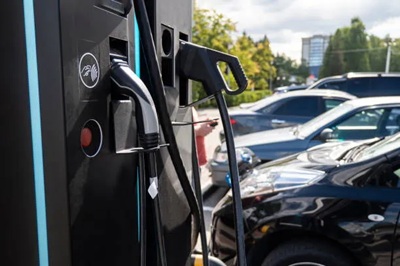


Level 3 EV Charging Stations: Powering the Future of Fast and Efficient Electric Mobility
Level 3 EV Charging Stations: Powering Fast and Efficient Electric Mobility
As a leading EV charger manufacturer in China, LiCB Charge delivers reliable AC and DC electric vehicle charging stations along with comprehensive charging solutions.
As electric vehicles (EVs) grow in popularity, fast and reliable charging infrastructure is increasingly essential. EV charging comes in three levels—Level 1, Level 2, and Level 3—each offering different charging speeds. Among these, Level 3 chargers, or DC Fast Chargers (DCFC), provide the quickest charging, delivering power from 50 kW up to 500 kW or more.
Electricity from the grid is alternating current (AC), but EV batteries store direct current (DC). Charging requires converting AC to DC, and where this happens differentiates the charging levels:
Level 1 and 2 chargers supply AC power to the vehicle, where the onboard charger converts it to DC. This limits the speed based on the onboard charger’s capacity.
Level 3 chargers perform the AC-to-DC conversion externally, delivering DC power directly to the battery and bypassing onboard limits for much faster charging.
Level 1 charging uses a 120-volt outlet, adding 2 to 5 miles of range per hour—ideal only for emergency or overnight home charging. Level 2 chargers run on 240 volts and provide 10 to 60 miles of range per hour, common in homes and workplaces. In contrast, Level 3 chargers provide rapid charging, often restoring 20% to 80% battery capacity in 15 to 45 minutes.
Level 3 chargers demand significant infrastructure: they require a 480-volt three-phase power supply typical in commercial or industrial settings. Due to their size and power, they are not suitable for residential installation. These units can weigh over 500 pounds and need advanced cooling systems.
The most common Level 3 connectors include:
CCS (Combined Charging System): The standard across North America and Europe.
CHAdeMO: An older standard, mainly for some Asian EVs.
Tesla Supercharger: Tesla’s proprietary connector, with adapters for other vehicles.
| Charging Level | Voltage | Power Output | Typical Charging Time | Range Added (30 mins) |
|---|---|---|---|---|
| Level 2 | 240 V | 3.3–19.2 kW | 4–8 hours (full) | 10–30 miles |
| Level 3 (DCFC) | 480 V+ | 50–500 kW | 15–45 mins (20–80%) | 60–200+ miles |
Charging speed varies based on vehicle battery size, state of charge, and temperature.
Level 3 chargers are ideal for:
Public charging stations along highways to enable long-distance travel.
Fleet operations where fast turnaround is critical for buses, delivery vans, and ride-shares.
Commercial properties like malls, hotels, and gas stations aiming to attract EV drivers.
For many EV owners who charge mainly at home or work, Level 3 fast charging may not be necessary. But for long trips and commercial use, Level 3 is essential.
Level 3 chargers come with challenges:
High installation costs ranging from $30,000 to over $100,000, including equipment, permits, and power upgrades.
Vehicle compatibility issues, as not all EVs support fast DC charging.
Grid impact concerns, since multiple fast chargers can cause high peak demand, requiring coordination with utilities.
Limited availability compared to Level 2, though government incentives are expanding their deployment.
Despite challenges, Level 3 chargers offer advantages:
Reduce vehicle downtime by enabling rapid charging.
Attract EV-driving customers who value speed and convenience.
Support sustainability goals and may qualify for incentives.
Future-proof infrastructure as battery and charging technologies evolve.
Level 3 charging stations are transforming electric mobility by dramatically shortening charging times and enabling longer trips. While costly and complex, their benefits for drivers, businesses, and fleet operators make them a key part of the EV ecosystem.
As EV adoption rises and fast-charging technology advances, Level 3 chargers will become increasingly important in building a cleaner, faster, and more convenient transportation future.Learn more about Google SEO.
